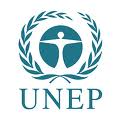UNEP and Post-Disaster Environmental Support to Haiti
 Any discussion on transitioning from emergency relief to development in Haiti must take into account environmental issues. Environmental degradation is a major factor behind decreasing agricultural productivity, hunger and malnutrition, urbanization, and vulnerability to natural disasters. Since the earthquake, the United Nations Environmental Program (UNEP) has been working with the Haitian government to build its capacity to address environmental challenges such as marine management, clean energy promotion, and trans-boundary reforestation. A brief summary of UNEP's activities in Haiti follows below.
Any discussion on transitioning from emergency relief to development in Haiti must take into account environmental issues. Environmental degradation is a major factor behind decreasing agricultural productivity, hunger and malnutrition, urbanization, and vulnerability to natural disasters. Since the earthquake, the United Nations Environmental Program (UNEP) has been working with the Haitian government to build its capacity to address environmental challenges such as marine management, clean energy promotion, and trans-boundary reforestation. A brief summary of UNEP's activities in Haiti follows below.
Environmental support to the relief, recovery and reconstruction effort: In Q3, UNEP continued to provide wide-ranging technical assistance on environmental issues to a broad range of humanitarian actors, and to engage with the inter-cluster coordination processes at the country and UN levels. In addition, following the completion of rapid environmental assessments in Q1, UNEP conducted a second real-time environmental evaluation of the response given by the humanitarian and recovery community in order to identify environmental risks and opportunities. The assessment was based on an environmental performance rating system, noting the trend (improving, stable or worsening) and the key challenges yet to be addressed in the relief, recovery and reconstruction processes. As a global first, the report offered an environmental performance appraisal of the humanitarian clusters – providing at times a harsh spotlight on the issues and the response noted. In general, the environmental performance for humanitarian relief remains very poor (2 out of 5), while the performance for recovery and reconstruction is rated as 3 (mixed progress and worsening), as good early indications on intentions were found to have yet to be translated into practical action. UNEP is now reducing its activities in the humanitarian field and redirecting efforts towards resolution of a few key issues within recovery and development as set out below.
![]()
Biogas: In Q3, UNEP catalysed the creation of a working group on biogas and provided technical support to the government-led forum. The use of anaerobic biodigestion (biogas) for the treatment of human waste is seen in Haiti as a promising option for an urban population of 5 million without any sewage system. A national strategy paper, which is technically supported by UNEP, was developed to set out the proposed direction of investment in this field. Work with partners is currently progressing on: i) expanding the number of small/domestic-scale urban biogas units, and ii) undertaking a feasibility study for a single industrial scale unit for the city of Port-au-Prince.
The Haiti Regeneration Initiative (HRI): The HRI aims to propose a new model for the design and delivery of programs in the field of sustainable rural development. During Q3, UNEP started putting this model into practice with the detailed design of a major new program for the southwest of Haiti. The Haiti Southwest Sustainable Development Program will cover a mountainous coastal area of 600 km² with a population of 200,000. While still under development, the program is likely to operate on a 20-year vision. The program will include a Millennium Village Project based upon the highly successful local development approach tested in Africa and Asia by the Earth Institute of Columbia University since 2006.
Marine Program: Despite a plethora of serious issues such as shore-based pollution, overfishing and mangrove destruction, there is currently very little investment in marine environmental management in Haiti. In partnership with the Government of Haiti and regional partners, UNEP has progressed on the design of a national-scale programme, combining policy and legislative work with practical fieldbased investments.
Clean energy: Upon request of the national Government, UNEP significantly increased its engagement in the clean energy sector during the reporting period, namely through support to two government-led working groups, on improved cooking stoves and bottled liquid petroleum gas (LPG) expansion respectively. Both working groups seek to coordinate efforts and the creation of medium to long-term plans for development and investment. In partnership with the Government, UNEP also designed a 14-month bridging program to enhance coordination and policy development in the field of clean energy in Haiti, which is expected to start in late 2011.
Transboundary environmental management: UNEP and UNDP worked together with the governments of Haiti and the Dominican Republic during Q3 to design a transboundary program aimed at addressing deforestation in the border zone between both countries.
Contact: Antonio Perera, Programme Manager, Haiti Country Programme at antonio.perera@unep.org
Add new comment